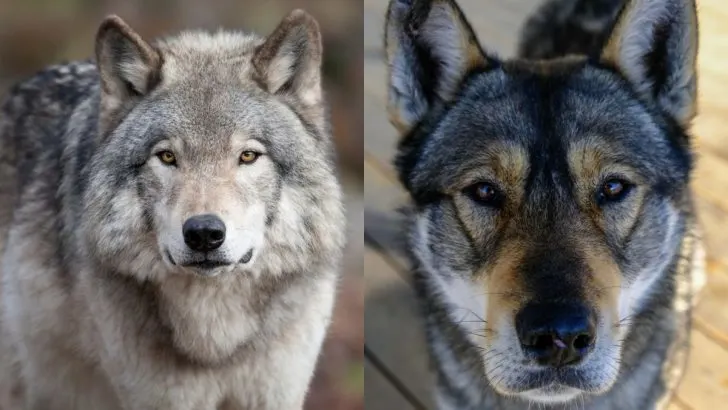Howdy there, friend! Are you looking for some dogs that look like wolves? You’re in the right place!
While it might not seem so when looking at breeds such as French Bulldogs or Poodles, dogs are descendants of wolves. This can even be seen in their Latin name, Canis lupus.
Centuries ago, people had domesticated dogs’ wolf ancestors, and from them, we have the first modern domesticated dog breeds.
As such, it’s no surprise that certain dog breeds still share the resemblance with their wild cousins. Some pups seem to have this more than others.
Here are some of the dogs that look like wolves:
1. Siberian Husky
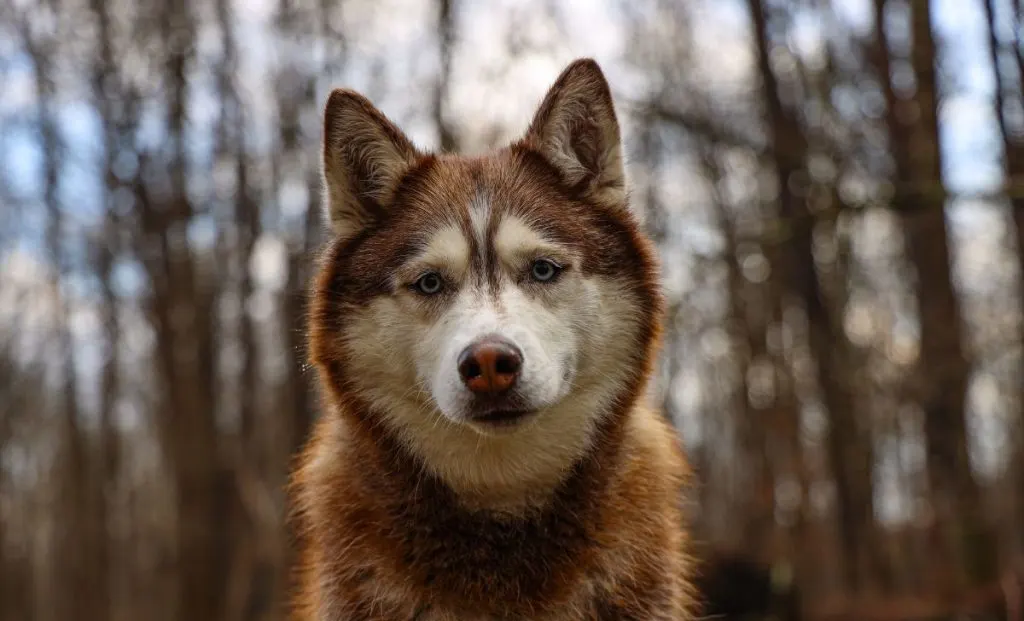
The first on our list is probably the most well-known dog that looks like wolf: The Siberian Husky.
This sled dog has some of the most recognizable looks in all of the dog world. Everybody knows the signature Husky colors, blue eyes, and fluffy coats!
These pups are known for being very vocal, although they rarely bark. Instead, they’ll whine, howl, and produce all sorts of sounds you probably never even knew dogs can produce.
In the northern countries, Siberian Huskies are still kept as working dogs. For the bigger part of the United States, though, they are beloved family pets.
2. Swedish Vallhund
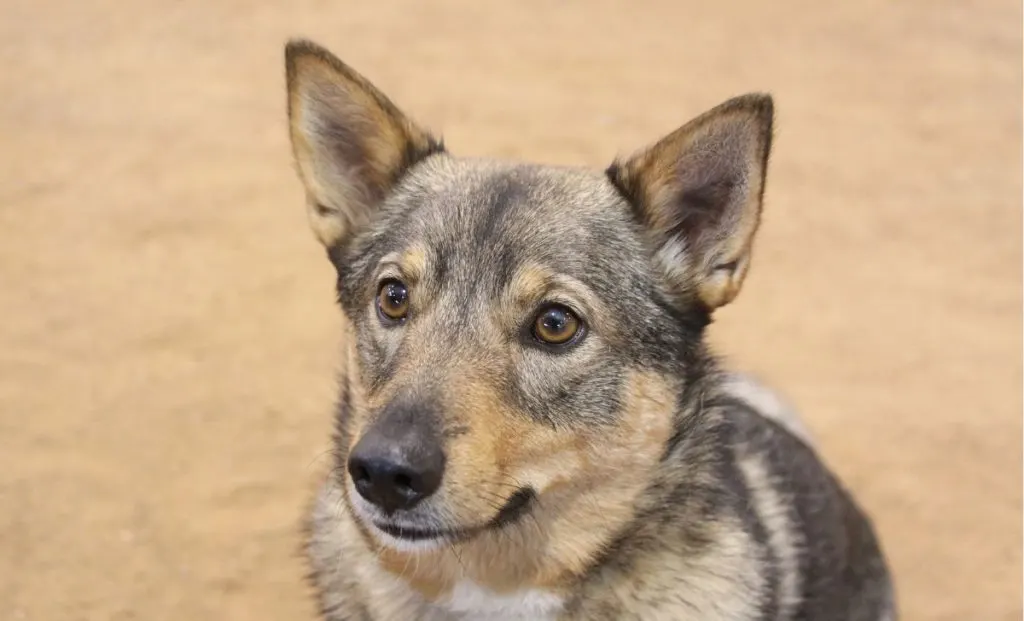
Okay, maybe these dogs don’t look exactly like wolves, but the resemblance is there.
Also known as Vastgotaspets and Swedish Cattle Dogs, these adorable little pups might look just like their wild cousins, if one of their parents was a Wiener dog! Their short legs truly make them stand out, and ensure they are anything but scary-looking.
They are herding dogs that actually share some resemblance with Corgis, another herding pup everyone knows and loves.
Vallhunds are friendly and polite, although highly energetic, so they might not be the best choice for people looking for sofa cuddle partners.
3. Saarloos Wolfdog

The Saarloos is a wolfdog breed originating from the Netherlands. It is the product of crossbreeding a German Shepherd and a Siberian gray wolf, which is why it looks so similar to its wild cousins.
As the breed exists for a very long time, it is quite domesticated – especially considering how they have more GSD than wolf genes.
Despite this, out of all the domestic dogs, research has shown that the Saarloos has more genetic association with the gray wolf than any other breed – except, perhaps, the Czechoslovakian wolfdog.[1]
Still, just like most other wolfdog breeds, the Saarloos are not accepted by the American Kennel Club (AKC). However, it is accepted by the Federation Cynologique Internationale (FCI), as well as the Dutch Kennel Club.
4. Northern Inuit Dog
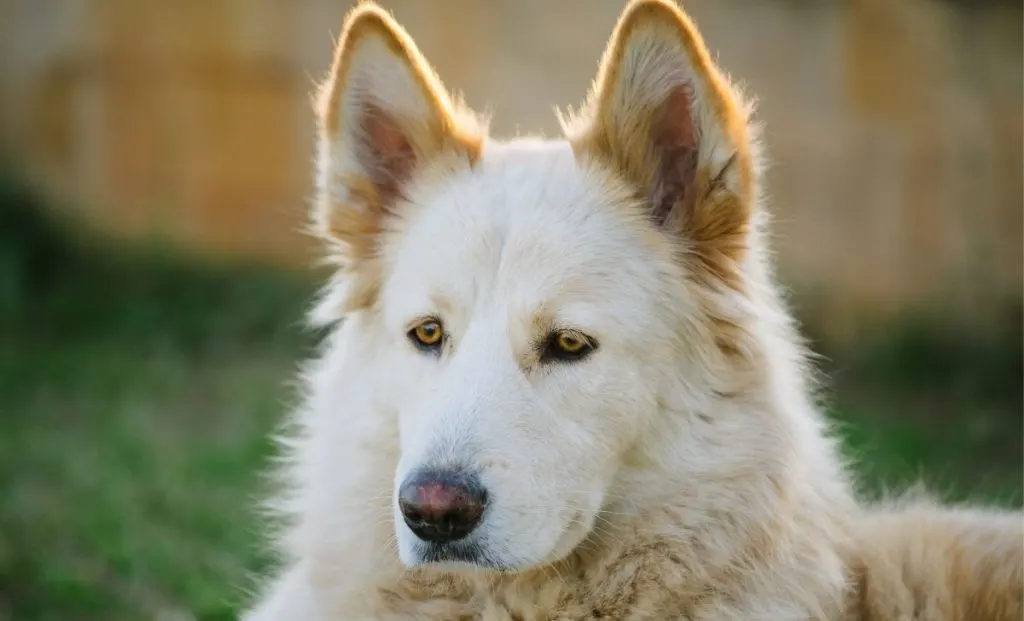
Northern Inuit Dog is a dog breed from the UK made as the result of a local breeding project to produce a dog breed that looks just like a wolf.
While their exact origins are unknown, they are likely the result of crossbreeding numerous different breeds imported from Northern America with German Shepherds, Alaskan Malamutes, Samoyeds, and Siberian Huskies.
Considering how they aren’t crossbred with real wolves, they are extremely domesticated and loyal, with a temperament that makes them not only great working dogs, but also family pets.
During the breed’s development, the Northern Inuit Dog diverged into several breeds, including the utonagan, the British Timber Dog, and the Tamaskan.
Oh, and did you know that the direwolves from the Game of Thrones were, in fact, Northern Inuit Dogs?
5. Alaskan Klee Kai
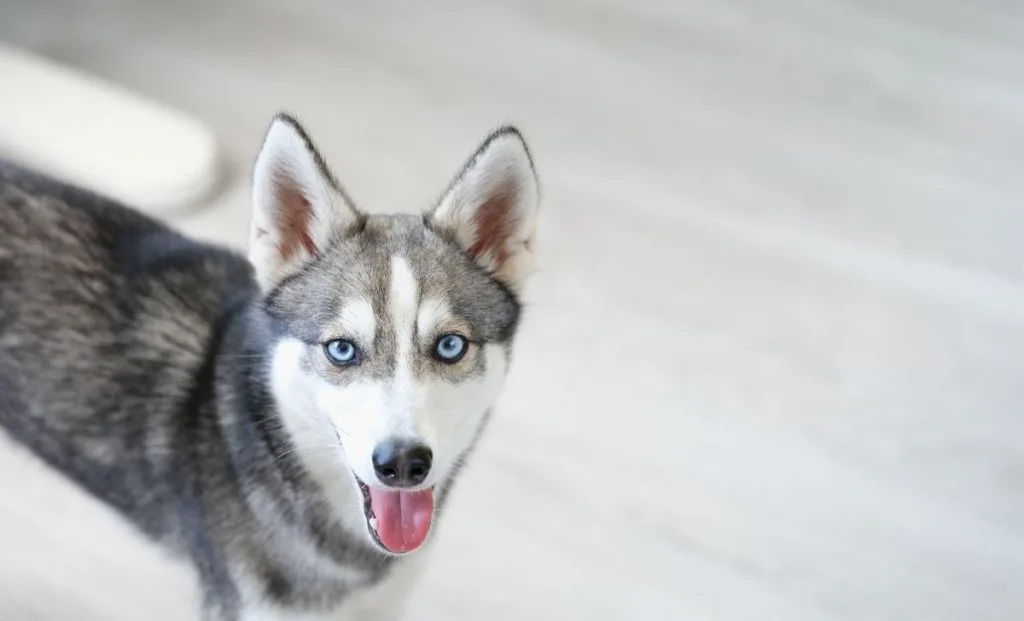
This is yet another dog breed that looks like a wolf, but smaller. In fact, I’d dare to say it looks just like a wolf puppy!
The Alaskan Klee Kai is often considered a miniature Husky, due to its resemblance to this breed. Some even consider it to be a Pomsky, a tiny Pomeranian Siberian Husky mix.
None of this is true, though, and Alaskan Klee Kai is an independent breed – although some think it was developed to have the good looks of a Husky, but in a smaller size.
One thing is certain: They are probably the cutest dogs on our list!
6. Czechoslovakian Wolfdog
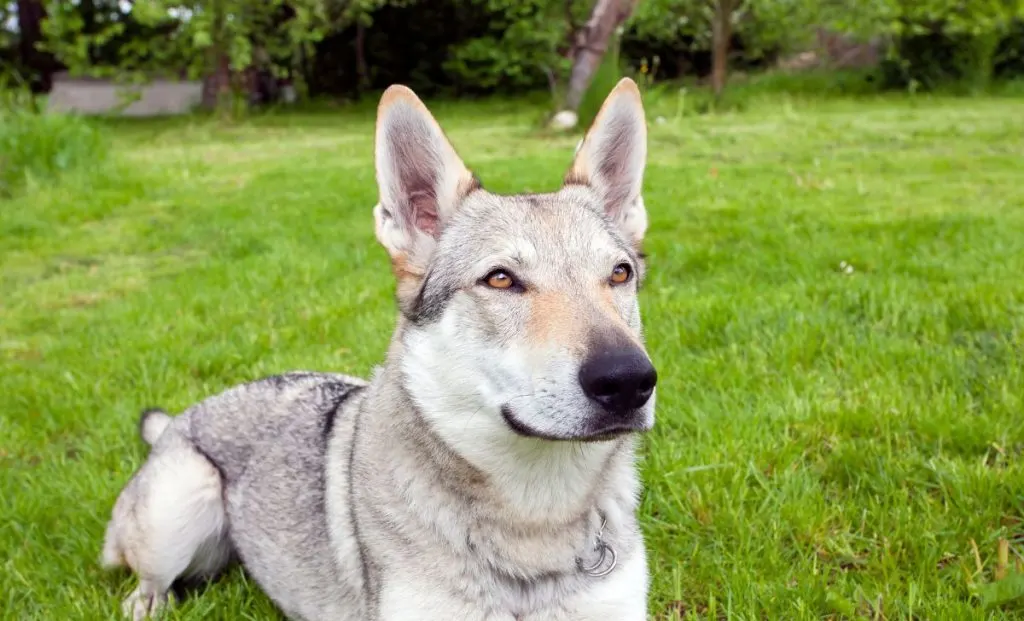
The Czechoslovakian Wolfdog is yet another breed resulting from attempts to create a dog that looks just like a wild wolf. Breeders originally crossbreed GSDs with Carpathian gray wolves, resulting in a well-rounded breed that is used as Border patrol and search and rescue dogs.
Just like the Saarloos Wolfdog, the Czechoslovakian Wolfdog is not recognized by the AKC, but is accepted by the FCI.
While these pups are yet to reach the popularity of most other wolfdog breeds, they are slowly becoming more and more widespread – although they are still typically used as working dogs instead of pets.
7. Alaskan Malamute
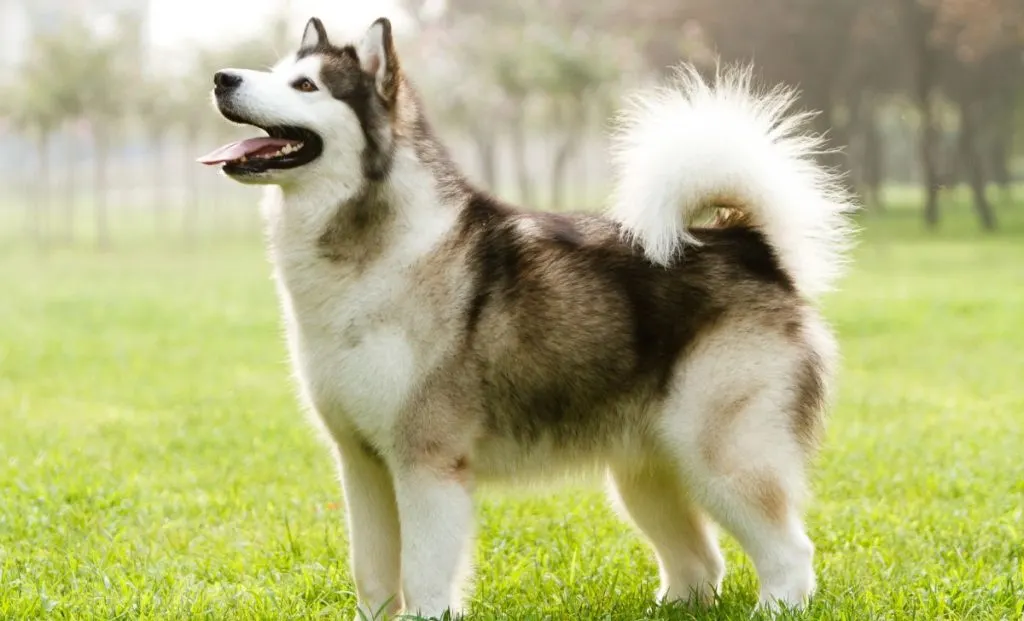
Alaskan Malamute is yet another of those breeds that looks quite similar to Huskies, but yet it’s quite different at the same time.
Indeed, this picture might make you think you are looking at a large, fluffy Husky instead of another breed. However, while Huskies were bred for speed, Alaskan Malamutes were bred for pure endurance and power.
This is a spitz-type dog that is hard-working, loyal, and playful, while also very dignified at the same time.
They are gentler than Huskies, making them a better choice for large families with children, provided they can handle the dog’s large size.
8. Finnish Lapphund

Yet another spitz-type dog, the Finnish Lapphund, also known as the Finnish Lapponian Dog, is a medium-sized pup used for herding reindeer.
Its long coat is made to withstand even the most extreme cold weather. In fact, in Finland, the Finnish Lapphund is one of only two breeds legally allowed to be kenneled outdoors in the winter!
Even though you might have never heard of this breed, they are quite popular in Finland and the rest of Nordic countries. Hopefully more and more people will hear about them, and this doggie will become a household name in the US.
9. Greenland Dog

The Greenland Dog is a cousin of Husky, as they share not only similar appearance but also the location of origin.
They were brought to North America from Siberia some 1,000 years ago, together with their close cousins, the Canadian Eskimo Dogs
The breed has a sad history, although a glorious one. When Roald Amundsen, the first person to reach the South Pole, started his mission, he brought numerous Greenland Dogs with him.
In fact, he brought more dogs than he needed, so that the weaker pups could be used as food for the rest of the dogs and men.
Not only do these dogs look like wolves, they also have some genetic closeness with the extinct Taimyr wolf.[1]
10. Irish Wolfhound
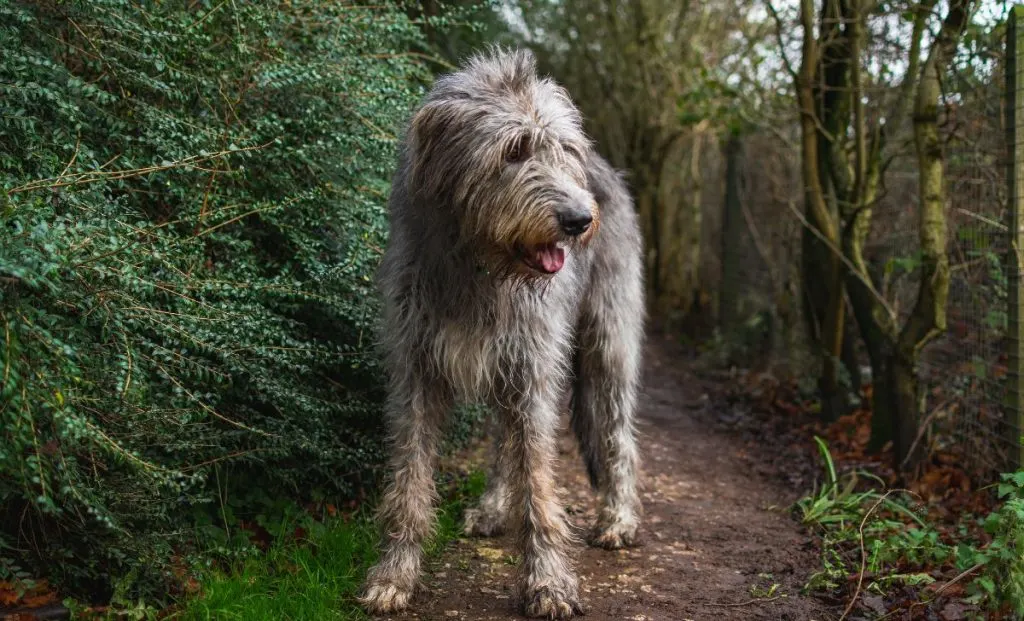
Irish Wolfhound is not only one of the largest dogs that look like wolves – it is also one of the largest breeds ever! These giant dogs can easily reach a height of 3 feet, making them as tall as a young child!
Their size alone is enough to make many people confuse them with some wild beast, although its medium-length coat will quickly make you realize this is just an adorable doggie looking for a human companion.
This beloved breed is known not only for its size, but also for being a regimental mascot of the Irish Guards since 1902!
Believe it or not, this breed is even older than that, as the first mentions of large Gaelic dogs were found in 391 in Ancient Rome.
11. Akita Inu
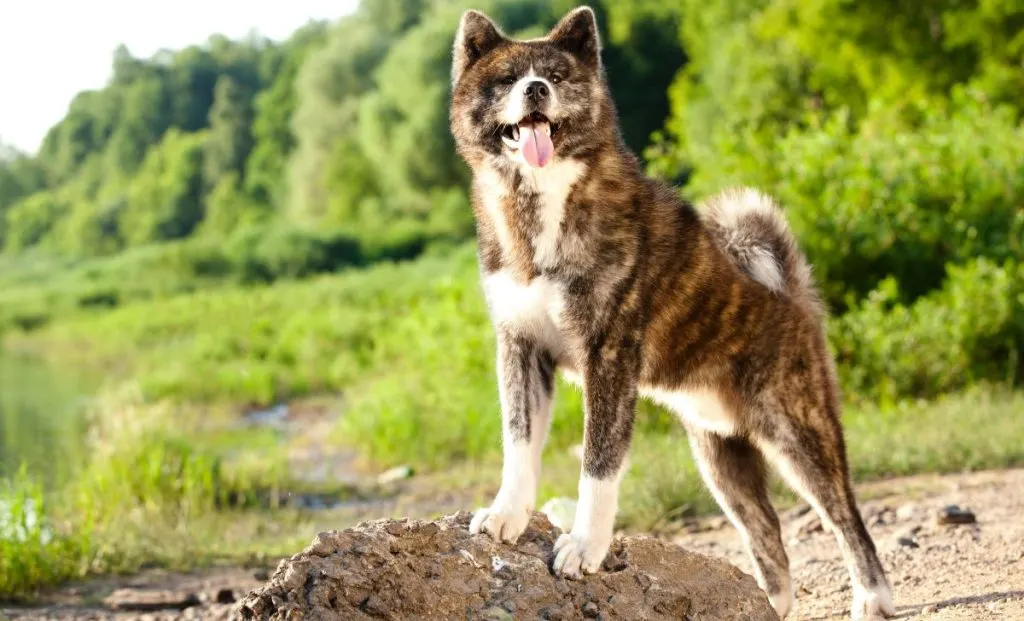
I bet you’re surprised to see a Japanese breed on this list, but here we are!
Many people say that Akitas look like fluffy wolves. Others say it reminds them of huge foxes. Either way, it seems like a lot of their wild ancestors can be noticed on them.
It’s important to note that today there are two Akita breeds: The Japanese Akita and the American Akita.
While both look quite similar to the untrained eye (and both share that resemblance with wild canines), canine organizations consider them to be separate dogs, forbidding breeding between the two.
12. Bohemian Shepherd
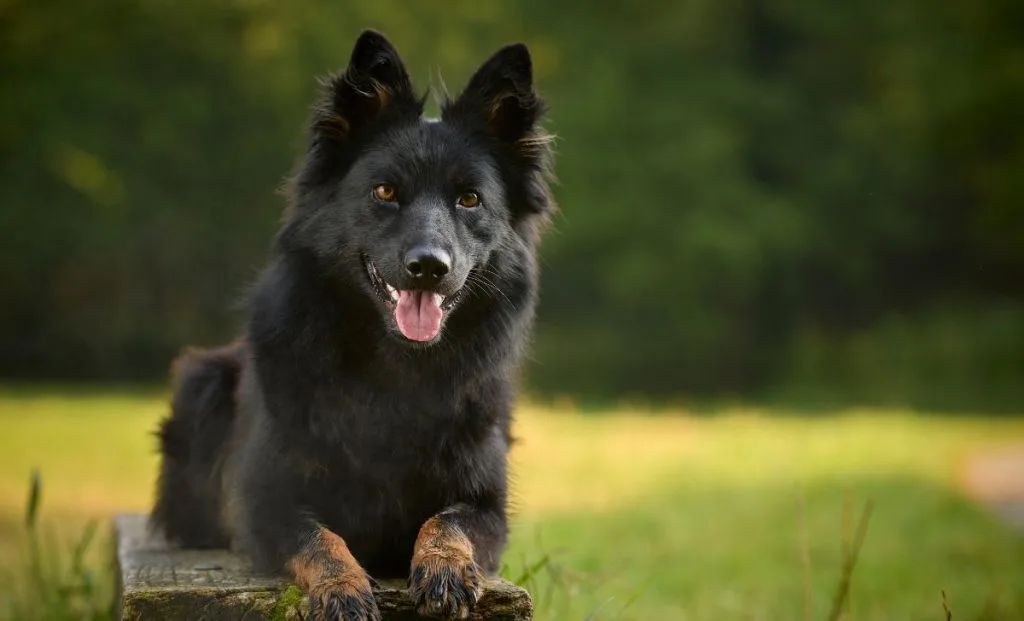
The Bohemian Shepherd is yet another Czech dog breed that has made it to this list. No, it didn’t get its name due to the aesthetics, but rather due to the region they come from, the southwest Bohemia.
This breed almost went extinct during World War II, but it was brought back in the 1980s by a group of cynology experts and breed enthusiasts.
Some people confuse these pups with certain German Shepherd mixes, due to the close resemblance between the two breeds. However, there is no proof that they are related in any way, and any similarities are probably purely accidental.
13. German Shepherd Dog

Finally, one of the most anticipated dogs in the article, the German Shepherd. It’s impossible to have a list of dog breeds that look like wolves without mentioning the famous GSD.
This is an intelligent dog known for its work ethics. From herding to guarding a house, there is nothing a German Shepherd can’t do!
It may come as a surprise to hear that a GSD actually doesn’t have any wolf blood. This is not a wolfdog breed, no matter its looks.
While many people want to keep German Shepherds as family dogs, it’s important to say that this dog needs a lot of exercise and extensive training. It can be rather territorial, which can make him tricky with strangers.
At the same time, they are extremely loyal and even friendly with their family members – so much so that they are prone to separation anxiety if left alone for prolonged periods of time.
14. The Canadian Eskimo Dog
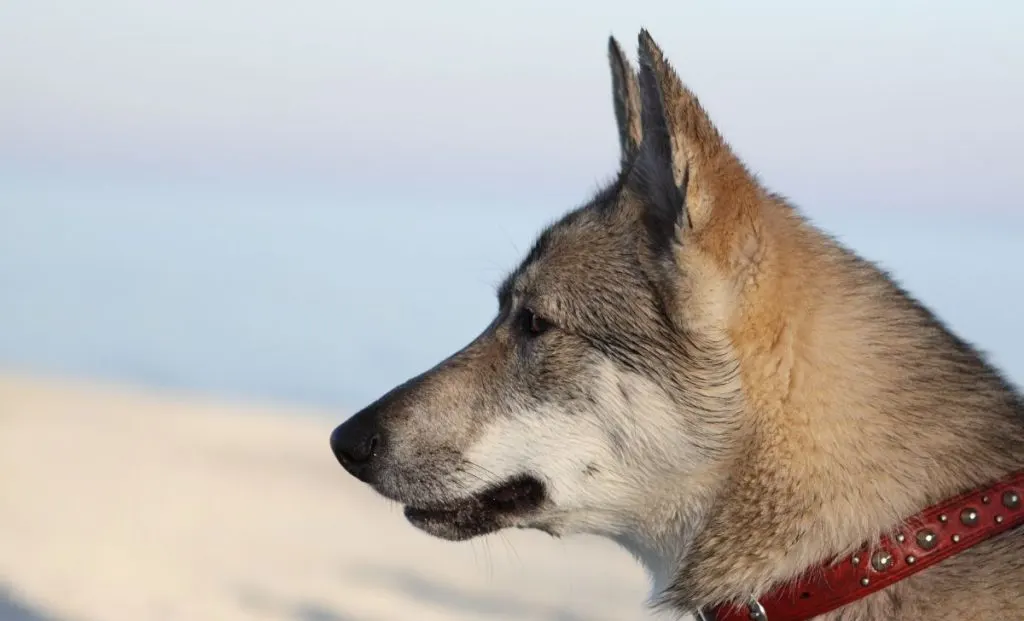
Some people consider The Canadian Eskimo Dog to be the same dog breed as the Greenland Dog. In a way, they would be right, as the two dogs have not diverged enough to be considered separate breeds.
However, due to their geographic isolation, they have certain different traits, including their coat color and a slight size difference.
Today, the Canadian Eskimo dog is on the verge of extinction, with only a few hundred purebred dogs in the world. There are ongoing efforts by the Canadian Government to increase the breed’s population, but it’s too soon to see the results.
15. Norwegian Elkhound
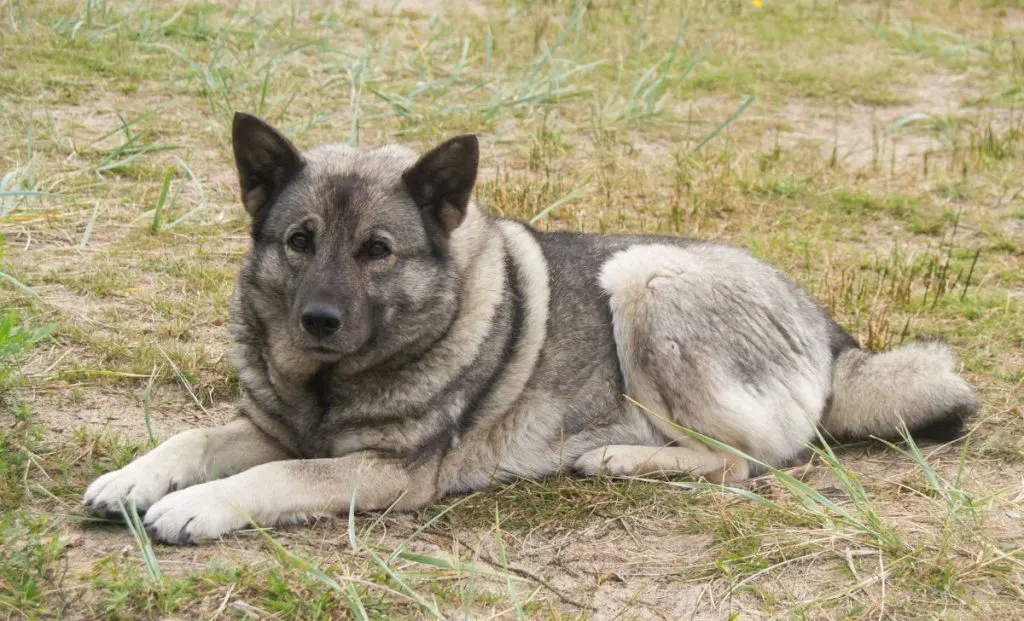
It’s probably not surprising there are so many Northern breeds on this list. These pups were usually kept to be working dogs, so there was no need to make them physically different from their wild ancestors.
This is the case with Norwegian Elkhound, the National Dog of Norway.
As its name suggests, this pup was bred to be a guardian dog, a hunting dog, a herding dog, as well as a dog for personal protection. Some Elkhounds were even known to hunt wolves or bears, which is quite brave!
Despite it having a “Norwegian” in its name, it is believed this pup has origins in Sweden, but is nowadays almost exclusively bred in Norway and the UK.
16. Shiloh Shepherds
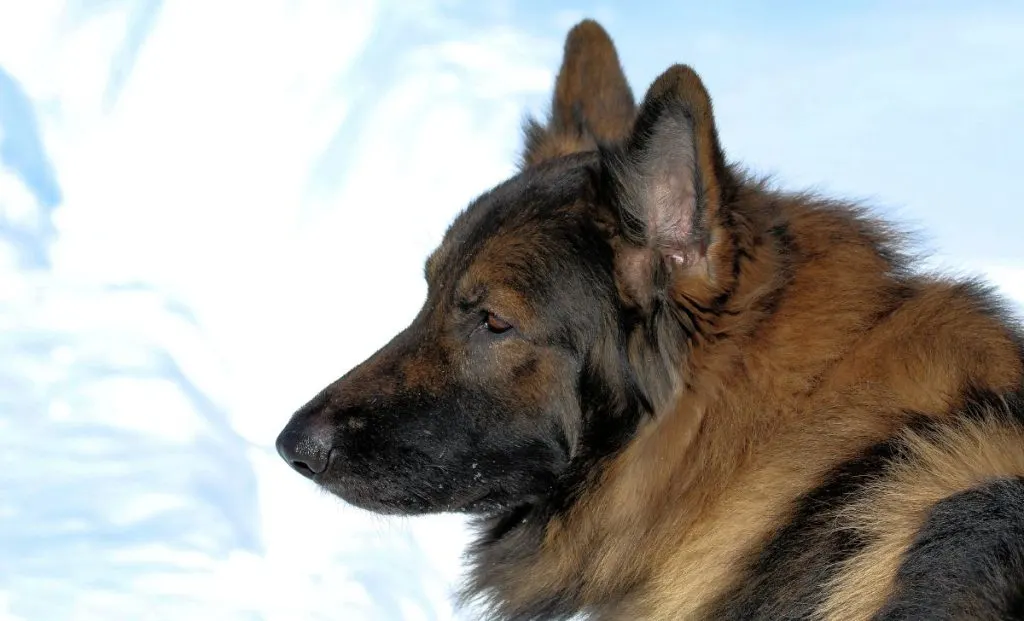
The Shiloh Shepherd is a lesser known cousin of the German Shepherd dog, and it results from crossbreeding GSDs with other dogs to improve their health and further develop their looks.
The product of this is a well-rounded dog that just happens to look like a long-haired wolf. I would certainly become afraid for a second if I was to see this pup alone in the dark near the woods!
This is a giant dog bred to be a family companion. They are calmer and friendlier and might be easier to handle. Also, they are more suited for families with children due to their gentle nature.
While there are some indications they have Alaskan Malamute blood in them, this is yet to be confirmed. They sure do look the part!
17. Samoyed
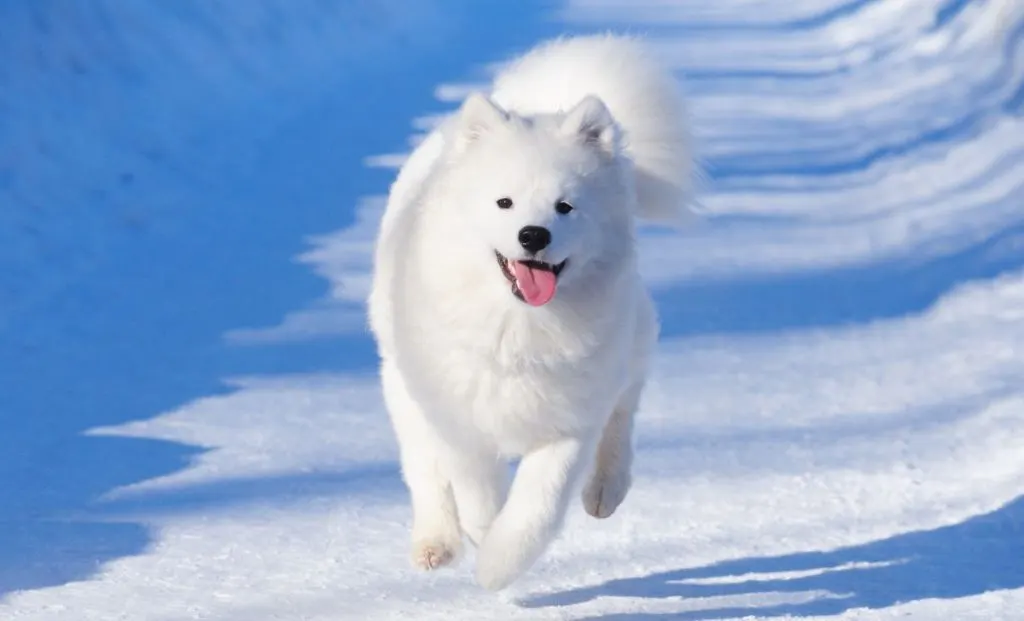
Samoyed is probably the most beautiful dog on our list. Not only do they look like wolves – they also resemble Teddy Bears! What a unique combination!
Like many other dogs you’ve seen today, Samoyeds were originally bred for pulling sleds. Today, however, this sport is considered outdated, so they are kept as working dogs or family pets.
Their white coats are dirt-repellent, making it easier to care for than you might think. However, they require regular brushing and grooming, and they are as far from hypoallergenic as you could imagine.
Also, Samoyeds are among few ancient dog breeds, although they haven’t always looked the part. It is believed they are direct descendants from ancient arctic dogs kept by the Nenets people,making them one of the very few basal breeds. [2]
18. Yakutian Laika
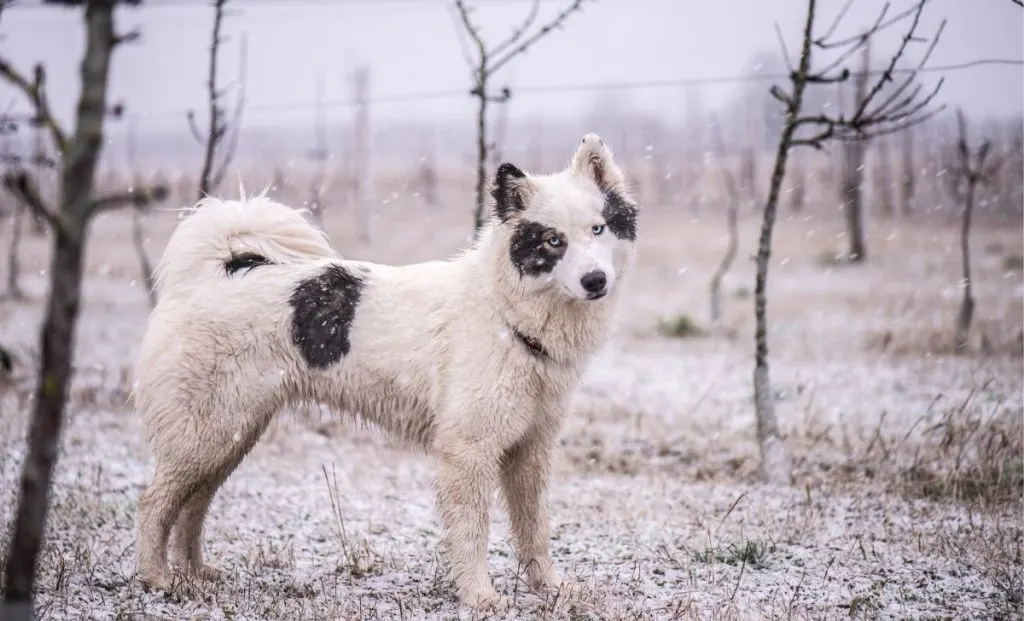
Look at that cute face!
The Yakutian Laika is an ancient working breed originating from Russia. Just like many other Laika dog breeds, they were kept to herd reindeer, pull sleds, and hunt.
They survived scarce Russian winters and sled journeys by eating fish, making them one of the few dog breeds with such survival instincts.
Just like a few other breeds I’ve mentioned, the Yakutian Laikas were almost extinct in the 20th century. Fortunately, revival efforts were made in the late 1990s, saving this breed.
And it’s a good thing they did, because just look at how adorable they are!
19. Kugsha

The Kugsha is a mysterious dog breed not officially recognized by any national or international kennel club.
Also known as the Amerindian Malamute and the American Husky, this is a spitz-type dog that has preserved its wolf-like appearance.
They are working dogs bred to be weight-pullers. Yes, they are some of the strongest breeds out there, capable of pulling rather heavy cargos.
Not only that, but they are highly intelligent and independent, so they are not a good match for inexperienced owners. They require lots of training and socialization, and you have to be patient with them.
Of course, this doesn’t mean they are aggressive – quite the opposite. However, teaching them to be obedient can be a handful.
20. Tamaskan

What’s this? Haven’t we already seen Huskies at the top of our list? No, you are not seeing doubles – this is Tamaskan, a breed believed to originate from Siberian and Alaskan Huskies, Alaskan Malamutes, Canadian Eskimo Dogs, and German Shepherds.
These are large dogs, typically larger than GSDs and Huskies but smaller than Alaskan Malamutes. They are also very healthy, with only a few reported health conditions.
While not registered by the AKC nor the FCI, they are recognized by the American Rare Breed Association (ARBA). There are breed clubs in numerous countries, including the US, UK, Canada, France, Germany, Croatia, and the Netherlands.
Finally, did you know there are already a few famous Tamaskan dogs? This includes Wave, the official Live Mascot of NC State Wolfpack, the North Carolina State University’s football team, as well as Luchta who appeared on Broadway.
21. Shikoku
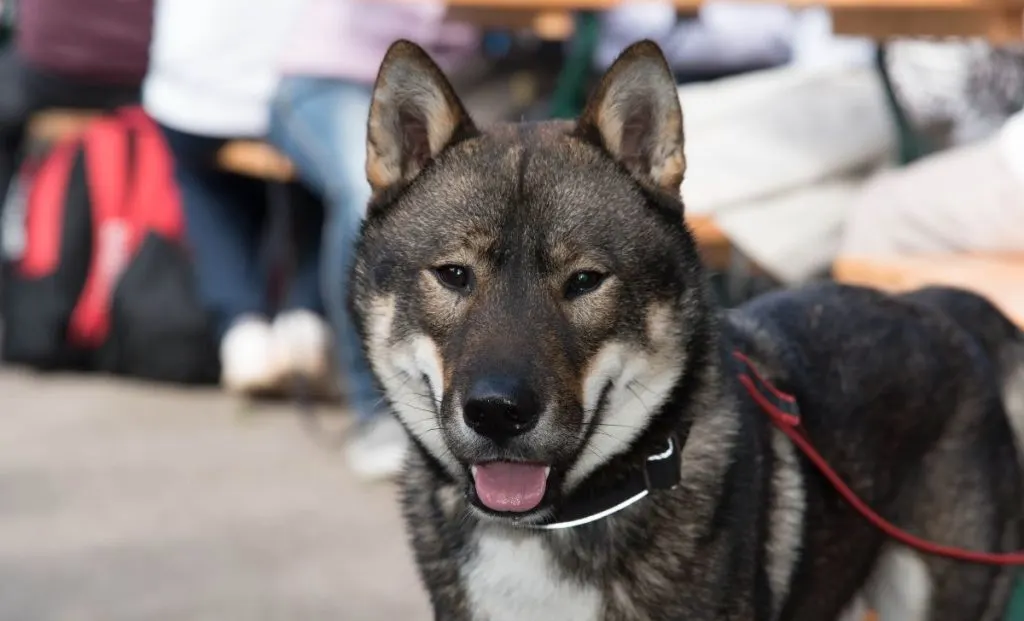
What’s that? Another Japanese breed?
The Shikoku Inu is one of six native Japanese dog breeds, including Akita Inu, Shiba Inu, Kai Ken, Ainu Ken, and the Kishu Inu.
This is a medium-sized dog that looks like a cross between a fox and a wolf. They are similar to Shiba Inus, with their thick fur, pointed ears, and upward-curling tails.
Since 1937, Shikokus have been considered a culturally important national treasure in Japan. Despite this, they are considered a rare breed worldwide. You aren’t likely to find many Shikoku breeders in the US!
And what a shame that is, considering how adorable these pups are.
22. American Alsatian
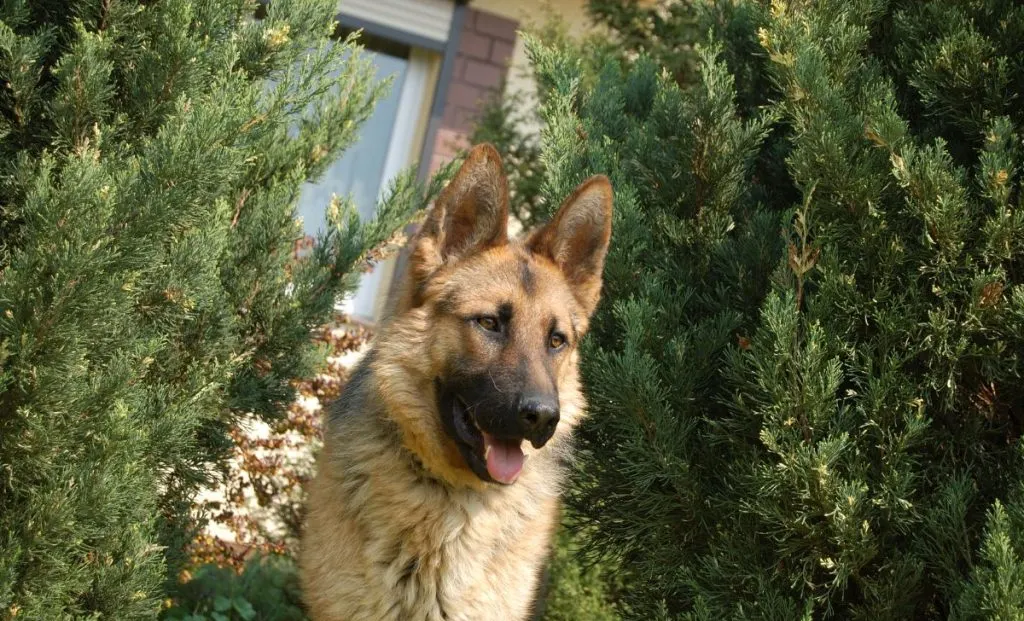
Lastly, we have the American Alsatian, a fairly new giant dog breed designed to look like a wolf while having the temperament of a companion animal.
In fact, this breed is so new that it is not yet formally recognized by any major kennel club – and it probably won’t be for a while. The breeders are still focusing on bettering this breed, making it live longer and ensuring its temperament is consistent.
The breed has a mixed ancestry, with dogs such as Alaskan Malamutes, GSDs, Pyrenean Mountain Dogs and Mastiffs in its bloodline.
This is a powerful dog that can be an excellent working pup. However, the goal is to make it a perfect family pet, good with adult and children alike.
These are calm and gentle dogs that love nothing more than to cuddle with their owners all day. While their temperament is quite unlike that of a wolf, we cannot deny that they can look scary.
Which of these dogs that look like wolves is your favorite? Let us know!
References:
[1] Skoglund, P., Ersmark, E., Palkopoulou, E., Dalen, L. Ancient Wolf Genome Reveals an Early Divergence of Domestic Dog Ancestors and Admixture into High-Latitude Breeds, Current Biology, Volume 25, Issue 11, P1515-1519, June 01, 2015. DOI: https://doi.org/10.1016/j.cub.2015.04.019
[2] Feuerborn, Tatiana R.; Carmagnini, Alberto; Losey, Robert J.; Nomokonova, Tatiana; Askeyev, Arthur; Askeyev, Igor; Askeyev, Oleg; Antipina, Ekaterina E.; Appelt, Martin; Bachura, Olga P.; Beglane, Fiona; Bradley, Daniel G.; Daly, Kevin G.; Gopalakrishnan, Shyam; Murphy Gregersen, Kristian; Guo, Chunxue; Gusev, Andrei V.; Jones, Carleton; Kosintsev, Pavel A.; Kuzmin, Yaroslav V.; Mattiangeli, Valeria; Perri, Angela R.; Plekhanov, Andrei V.; Ramos-Madrigal, Jazmín; Schmidt, Anne Lisbeth; Shaymuratova, Dilyara; Smith, Oliver; Yavorskaya, Lilia V.; Zhang, Guojie; Willerslev, Eske; Meldgaard, Morten; Gilbert, M. Thomas P.; Larson, Greger; Dalén, Love; Hansen, Anders J.; Sinding, Mikkel-Holger S.; Frantz, Laurent (2021). “Modern Siberian dog ancestry was shaped by several thousand years of Eurasian-wide trade and human dispersal“. Proceedings of the National Academy of Sciences. 118 (39): e2100338118. Bibcode:2021PNAS..11800338F. doi:10.1073/pnas.2100338118. ISSN 0027-8424. PMC 8488619. PMID 34544854. S2CID 237584023.
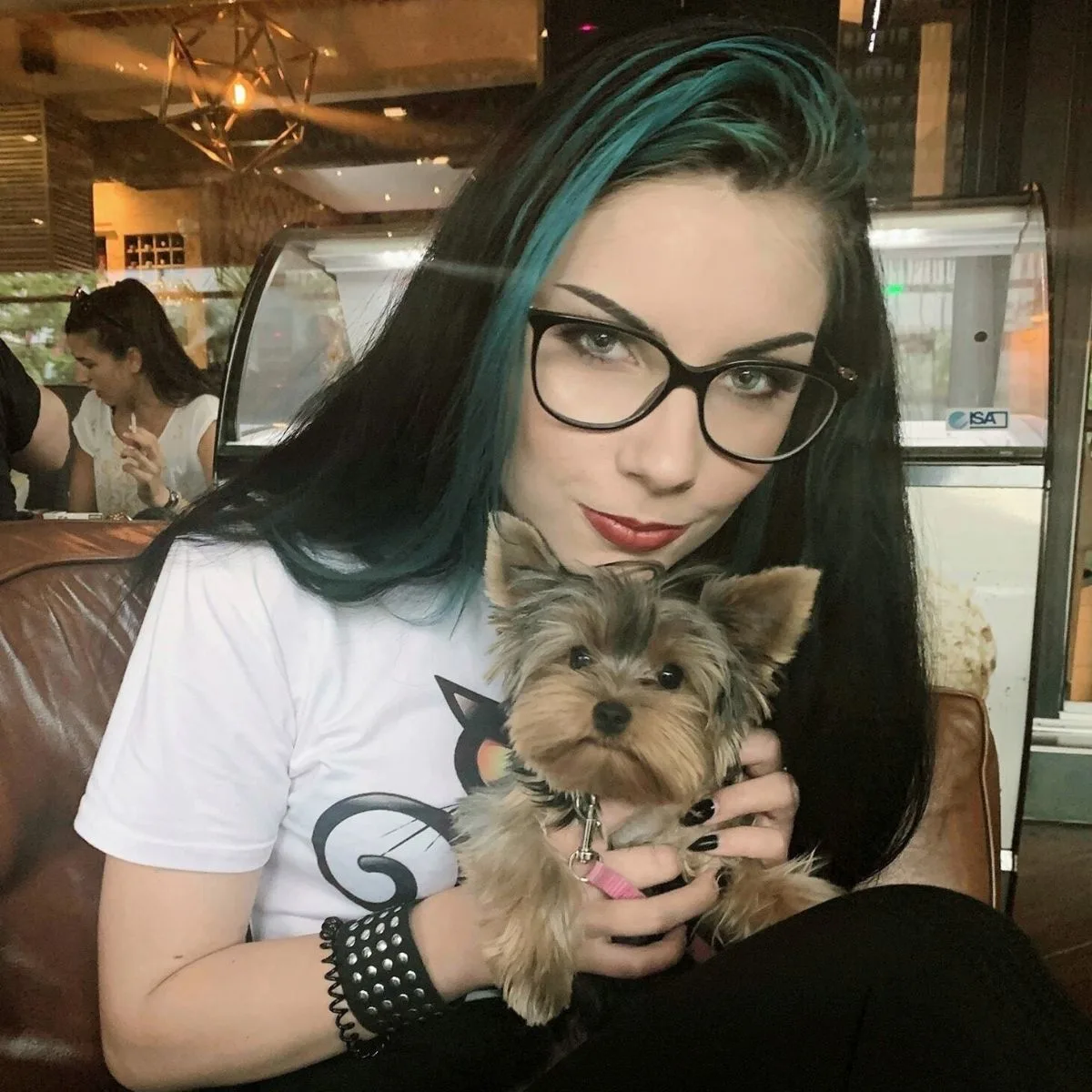
Vanja’s passion for writing started at an early age, which is why she pursued Journalism as her college degree. She can research any topic and find all the information before you bat an eye, which is a great thing for her job but a terrible one for her husband.
Even as a young child, she fell in love with everything fluffy – but dogs have a special place in her heart due to her childhood companion, a Corgie named Archie.
Motivated by her experiences and driven by a desire to give back to her four-legged companions, she spends her free time volunteering at a local dog shelter.
